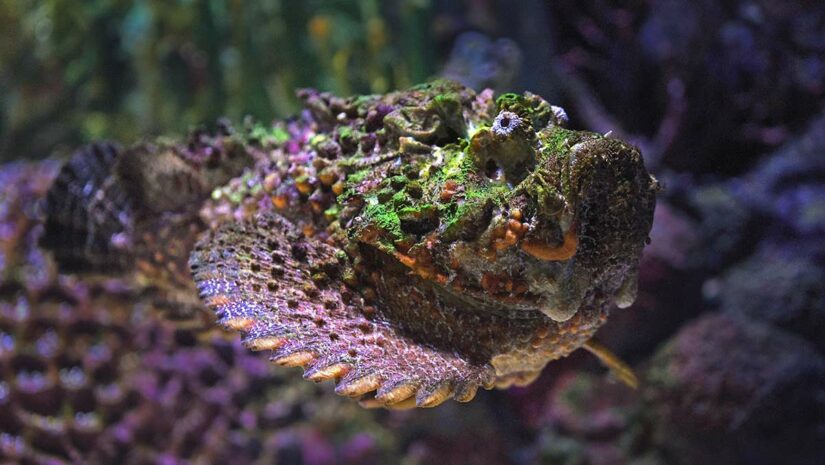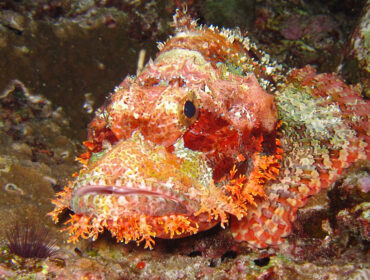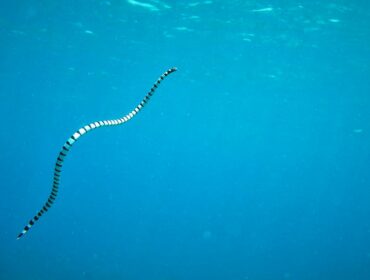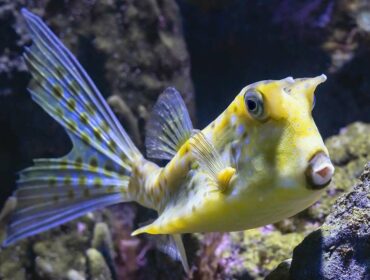Getting its name from its stone-like appearance, the Stonefish is without a doubt one of the ugliest fish in the sea. This excellent disguise allows it to blend in with the background as it waits for its prey, typically small fish, to wander close enough to wolf down. This fish lives in the coastal reefs along the Indo-Pacific regions, especially the Red Sea and Indian and Pacific Oceans.
What is a stonefish?
Out of the many odd faces and shapes of creatures in our vast ocean, the Synanceia is one that should strike fear into your heart, or at least a healthy respect for the danger it represents. More commonly known as the stonefish, it is the world’s most venomous fish — and it means business. A whole variety of nasty symptoms can result from an encounter with the stonefish: difficulty breathing, abdominal pain, vomiting, fever, delirium, seizures, paralysis, and even death.
How venomous is a stonefish?
In addition to its gruesome looks, the Stonefish is one of the most venomous fish in the world. It has sharp, venomous spines that contain enough poison to kill a man if accidentally stepped on. The Stonefish secrete powerful neurotoxins from the base of their dorsal fin spine, which is extremely lethal to human beings. What makes this fish even more dangerous is its stone or rock like appearance that allows it to camouflage itself perfectly with the surrounding reef. This has been the main cause for so many unsuspecting divers coming in contact with the sting of the Stonefish which is extremely painful and can cause tissue death, shock, and paralysis.
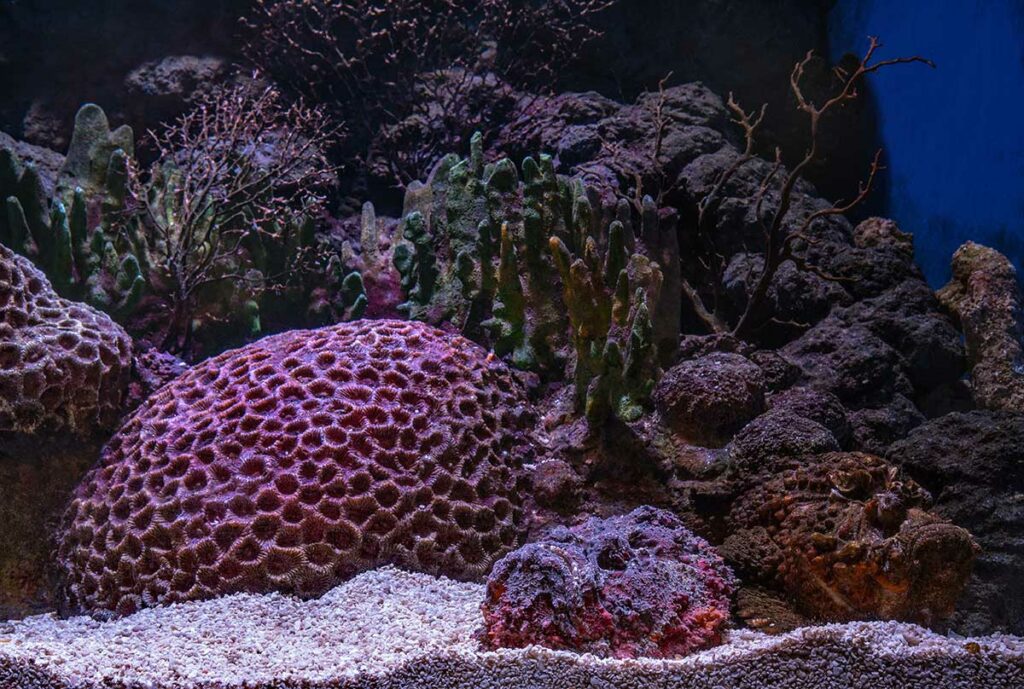
A master of camouflage
Avoiding the stonefish would be infinitely easier if it weren’t for their clever camouflage. Often they camouflage so well that scuba divers and snorkelers trample on them, thinking they are part of the undersea terrain. When threatened or even disturbed, the stonefish will raise venomous barbs found along its dorsal spine. The effects of this neurotoxin are swift. If you ever needed incentive to practice your buoyancy skills, here it is.
Where do stonefish live?
Stonefish are predatory and live on small fish and invertebrates. In turn, larger fish such as rays and sharks hunt them. They often grow to a length of 30-40 cms (12 -16 inches) long, and have 13 spines on their back that inject the toxin when pressure is placed on them.
Symptoms of a stonefish sting
The symptoms of a stonefish sting can range from an intense throbbing pain, with redness, swelling numbness and tingling in the affected area, followed by severe reactions including nausea, vomiting, stomach cramps, seizures and paralysis.
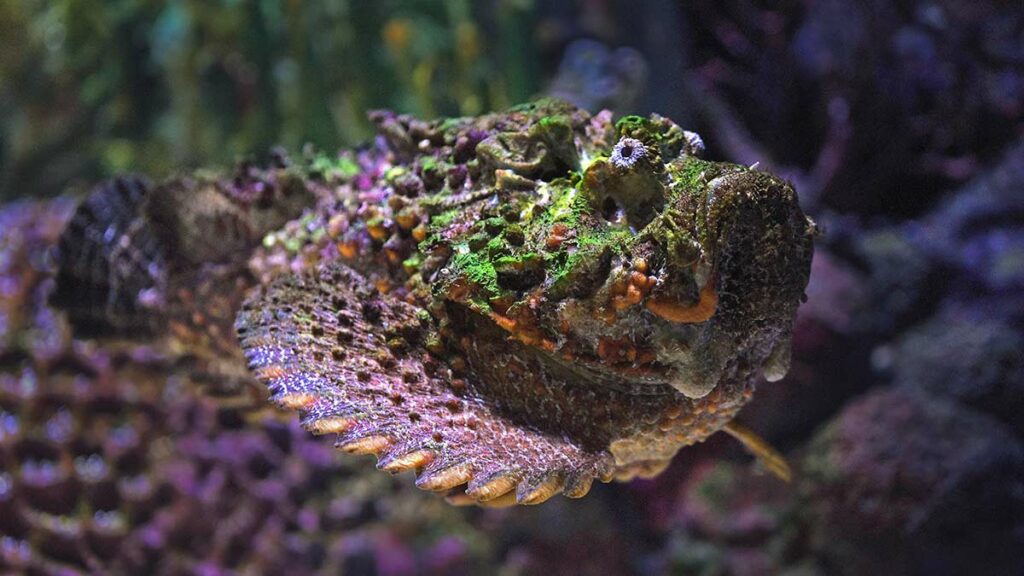
How to treat a stonefish sting
First aid treatment should be to immerse the wound for 30-90 minutes in as hot water as the victim can tolerate, to break down the protein in the venom, then scrub the affected area, attempting to remove any stings still present in the wound, and to seek medical attention as soon as possible.
Scuba divers are therefore advised to be very cautious when diving near reefs and wrecks, and are always advised against touching any surface on a dive. In shallower reef waters, scuba divers and people snorkeling should always keep their fins on, or wear dive booties, to prevent stepping on a Stonefish accidentally while exiting and entering the water.
Strangely enough, several aquarium hobbyists keep stonefish in their marine tanks where they are hugely popular, and in Hong Kong and some parts of Asia, this fish is sold in commercial markets to be consumed.

